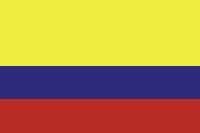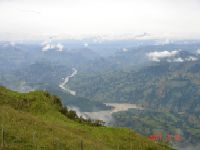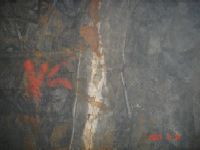Special Program for International Students
GRADUATE COURSE IN EARTH SCIENCE
& GEOENVIRONMENTAL SCIENCE
Current MEXT students
Alba Nury Gallego Hernández (Colombia)
Email: albanurygallego @yahoo.com,
s079703 @matsu.shimane-u.ac.jp
Thesis title: Spatial and temporal relationships among porphyry-copper and Au-Ag deposits in the northwestern flank of the Central Cordillera, Colombia and its Neogene geodynamic evolution.
Supervisor: Prof. Masahide Akasaka (2007-2010).
The target area of my study is located in the north-western flank of the Central Cordillera, in the northern part of the Cauca-Romeral paleosuture zone. Most of the area extends along the Cauca River basin, a feature which is controlled by a series of north-south trending faults (Cauca – Romeral fault system). This also represents the transition zone between the Central (continental crust) and Western (oceanic crust) cordilleras.
A series of hypabyssal porphyry intrusions are located along the basin of the Cauca River. These intrude a complex set of metamorphic rocks and volcano-sedimentary and sedimentary sequences. A number of porphyry-copper and Au-Ag vein deposits related to the magmatic activity of the porphyritic intrusions are also present. These have been exploited for centuries. Most of the porphyritic bodies are Miocene in age and are considered to be co-genetic. However, no systematic work has been carried out to verify these assumptions. My study is focused on investigating the circumstances leading to the formation of a group of these magmatic-related ore deposits.
The general aims of my research are:
- To investigate the mineralogical and geochemical characteristics of the different types of ore bodies, their relationship and evolution in space and time, and the origin and chemistry of the mineralizing fluids.
- To propose a model for the crystallization of each of the deposits studied, compare them with previous models, and to evaluate them in terms of current tectonic models.
- Reconstruct the geochemical evolution of the Neogene magmatic centers associated with major mineralization in the northwestern flank of the central Colombian cordillera.
Special attention will be given to the ore mineralogy and crystal chemistry of the sulfides, in order to have a better understanding of the source of the metals and the post-crystallization processes that occurred in this area.
Detailed mineralogical characterization, mineral chemistry, fluid inclusion analyses, determination of gas composition, and stable and radiogenic isotope geochemistry will be used in order to meet the above objectives.
The study will provide information on the mineralogy and crystal chemistry, physicochemical crystallization conditions (temperature, gas composition, salinity, pH), hydrothermal alteration and petrogenesis of the porphyritic intrusions. This information will contribute to a better understanding of the magmatic processes that occurred in the area, and will allow correlation with the geodynamic model of the Colombian Andean zone.
Moreover, improved understanding of the formation of the ore deposits and knowledge of the minerals, and consequently the elements involved, should provide a basis for development of environmentally less-aggressive mining.



